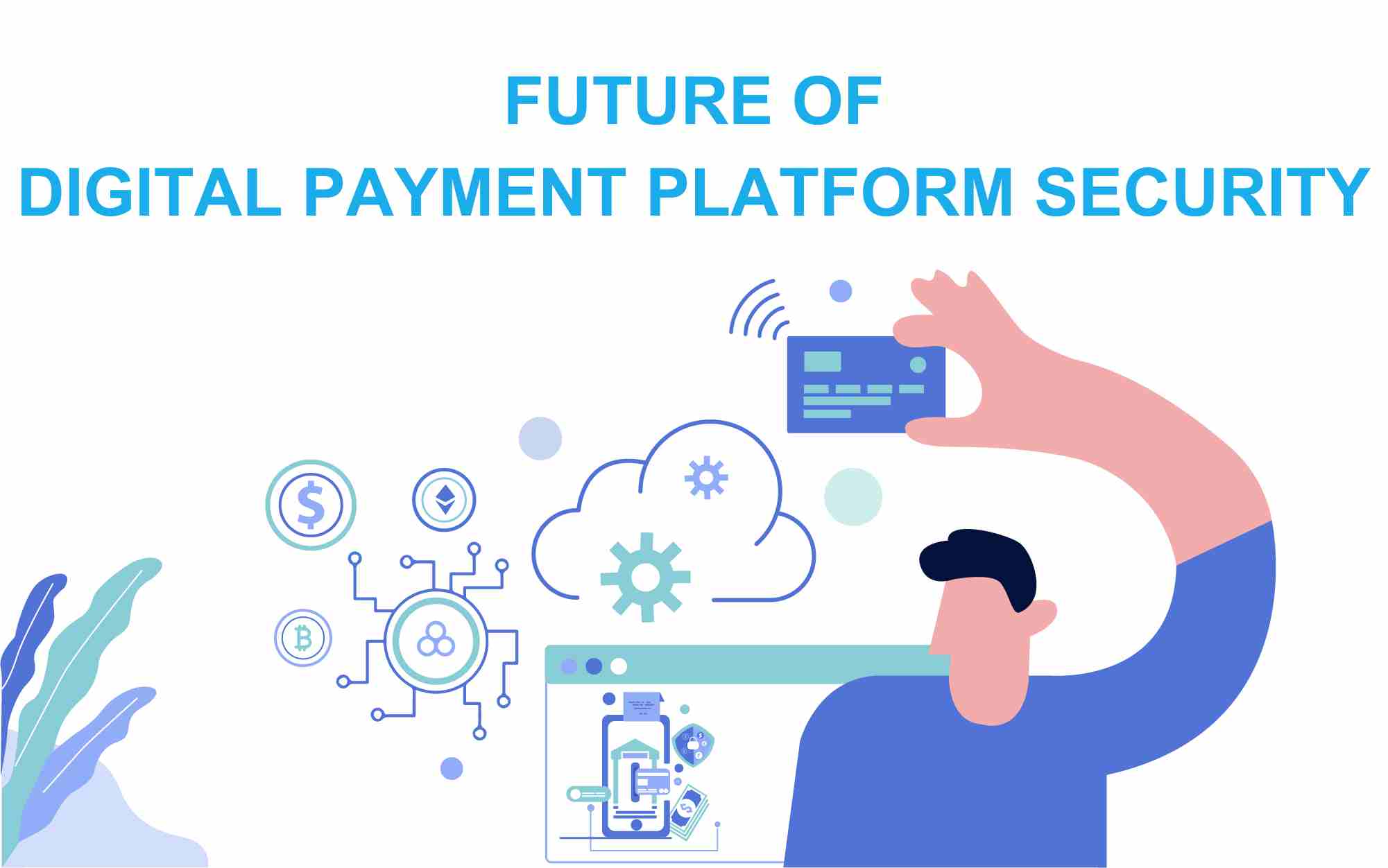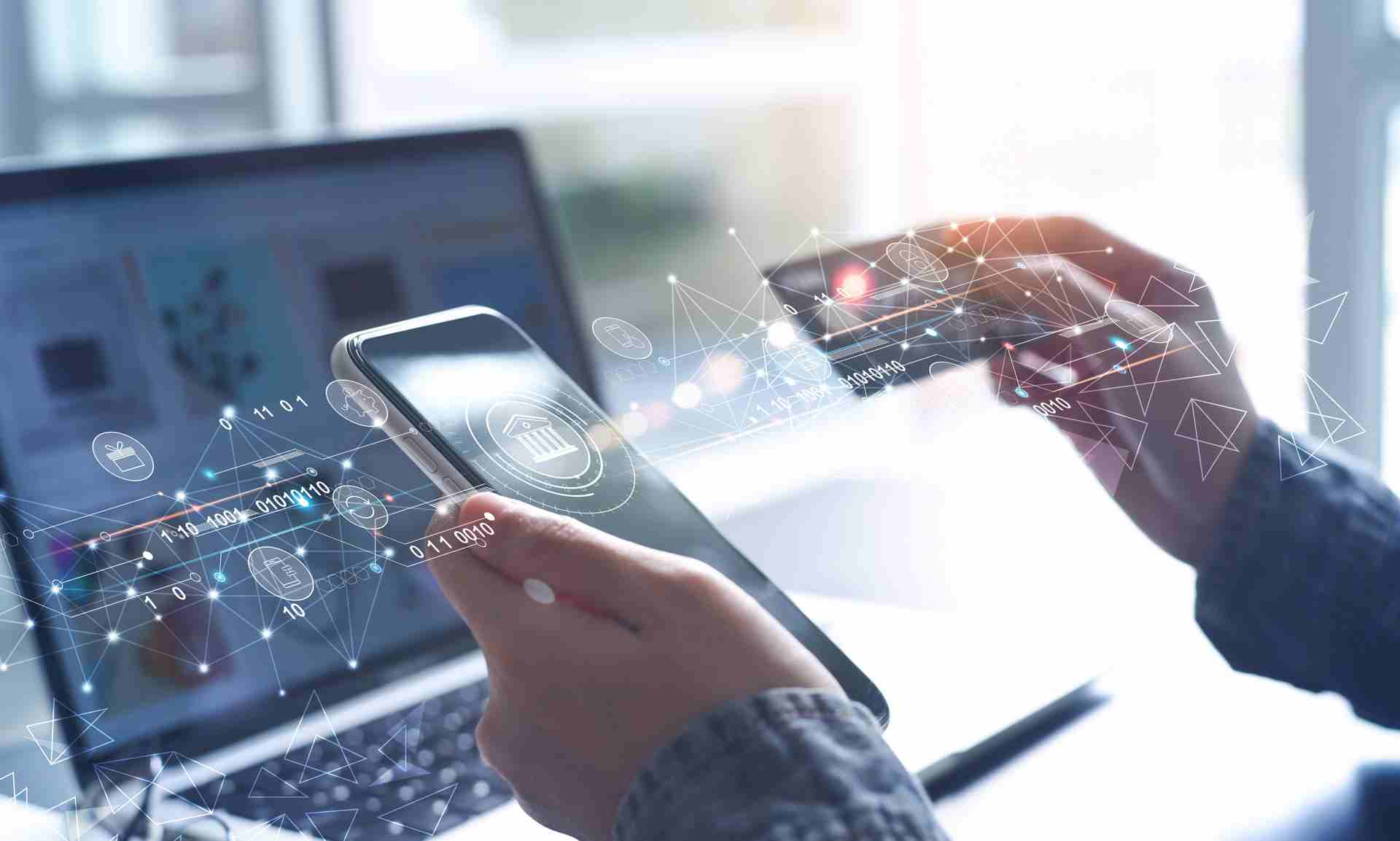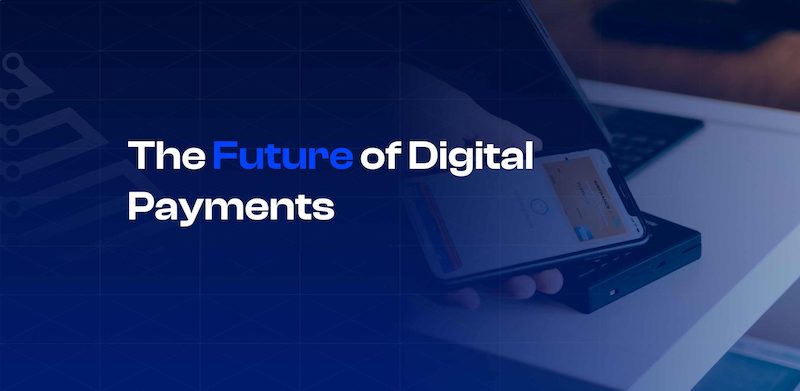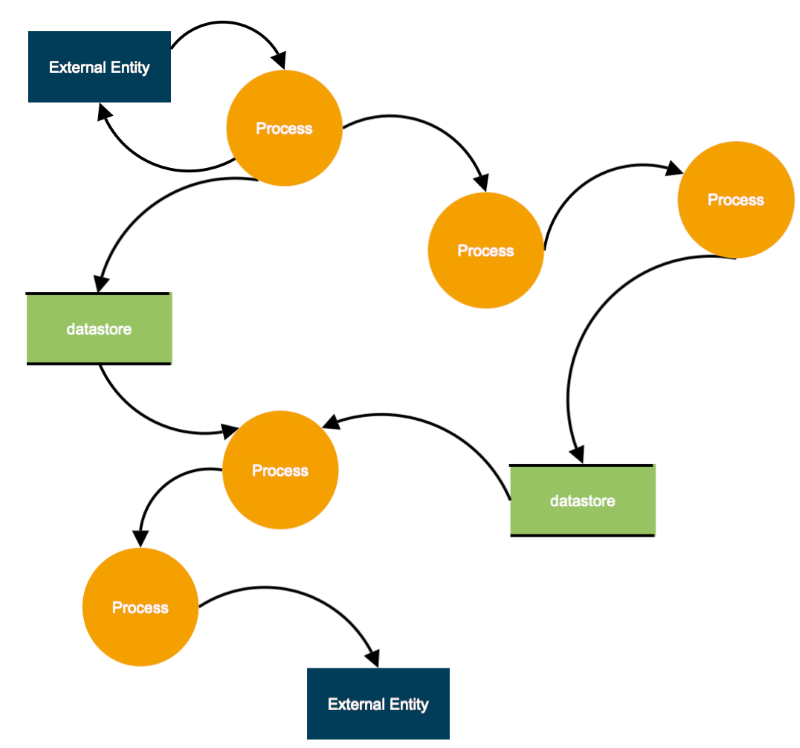Future of digital payment platform security: This burning question sits at the forefront of every tech-savvy spender’s mind. As we wave goodbye to cash and hello to taps and clicks, knowing your hard-earned money is safe is key. Think about this: as your fingertips whisk through mobile transactions, are they sprinting through a secure tunnel? Biometric authentication, AI’s sharp eye, blockchain’s solid chain of trust, and the swift convenience of contactless payments are redefining safety nets. But are these innovations solid ground or a tightrope over a digital abyss? Dive in as we unravel whether your wallet’s virtual future is a fortress or a facade.
The Integration of Biometric Authentication in Payment Security
The Role of Fingerprint and Facial Recognition
We keep our money safe by using parts of us that can’t be lost or stolen. Our unique body features. Fingerprint and facial recognition are changing the game in payment security. When you pay with a fingerprint, it’s like using a key that only you have. It means no one else can spend your money. It’s the same when you smile at your phone to approve a purchase. Your face is the password that protects your cash. It’s amazing, right? And it’s only getting better.
These methods don’t just block thieves. They make paying faster and easier. Stores and banks are all hopping on this trend. Soon, remembering PINs or carrying cards could be old news. But with new tech, comes new questions. How will these systems keep up with a growing number of users? What will happen if someone finds a way to trick them? These are the puzzles we’re eager to solve.
Voice Recognition Advancements
Now, let’s chat about voice recognition. It’s like having a secret handshake with your phone. You say a word or two, and bam, it’s like the phone knows it’s really you. This tech is always improving. It’s not just about the sound of your voice. It’s about how you say things – the tone, the speed, and the little quirks.
But, as we teach our devices to know us better, we also teach them to spot who’s not us. Picture this: a bad guy tries to imitate you, but the system is smart. It sees the difference and stops them in their tracks. This is big for security. Shopping online or sending money can be safer when your voice is the key.
We do have to keep an eye on how all this works. It needs to be smooth for everyone, everywhere. And it must respect our privacy. We’re building a future where payments are secure, fast, and so natural, they fit right into our day-to-day lives.
Biometric authentication is not a silver bullet, though. But don’t worry. We’re on top of it, always finding ways to make it stronger and keep your money safe. It’s about staying ahead and being ready for whatever comes next. We’re turning the stuff of sci-fi into everyday life, and I can’t wait to see what’s up ahead.
Enhancing Fraud Prevention with AI and Machine Learning
Deploying AI Fraud Detection Systems
We keep our money safe with help from AI fraud detection systems. These systems watch over our transactions like hawks. They learn from us and spot anything odd. With each purchase we make, the AI goes to work. It checks our habits and raises a flag if something seems off. So, if I usually buy books and suddenly my card buys a high-end TV, the AI pauses. It might ask me, “Hey, did you buy this?” This quick check adds a strong layer of defense against theft.
Behavior-Based Security and Anomaly Detection
Now, let’s talk about behavior-based security. It’s all about knowing each user’s unique way of dealing with money. Think of it as the way a friend knows you never wear polka dots. If they spot you in a polka dot dress, they’ll know something’s up. That’s how behavior-based algorithms watch our spending. They learn what’s normal for us. And just like an alert friend, they get suspicious when they spot something like polka dots on our account. If they see us making a purchase not like us, like buying loads of pizza when we’re known for healthy eating, they draw the line. They might block the transaction or send us an alert to check. This way, we catch fraudsters trying to sneak through. They guard our money day and night, adapting as our habits change. Their goal is to catch bad actors before they can do harm.
Think of AI as your financial bodyguard, always there, always watching. It doesn’t take breaks, and it doesn’t get tired. It’s a shield against unseen threats trying to snatch our hard-earned money. And the best part? It gets smarter every day, learning from the transactions of millions to protect our single penny.
As we live in a world filled with digital leaps, it’s good to know these AI guardians are on our side. They aren’t just software; they’re a promise of safety in an ever-evolving digital landscape. They help us step confidently with our money, making sure it’s there when we need it. While no system is foolproof, we sleep a bit easier knowing AI has our backs in the fight against fraud.
Blockchain and the Transformation of Finance Security
Decentralized Ledgers and Transparency
Picture a ledger, but not on paper or in one place. It’s shared by many, far and wide. That’s a decentralized ledger. They’re key to blockchain, the tech changing finance security. These ledgers track every transaction, clear as day, for all to see. Each entry, or block, is linked to the last, forming a chain. It’s a big deal because once info goes into a block, no single person can change it. Imagine you save a dollar. It’s logged. To change that, one would have to redo every single entry, a task too vast for most crooks.
Blockchain doesn’t just make things visible; it builds trust. No hidden moves, every exchange out there. Banks and companies use it to keep records clean and honest. They store data across a network of computers. This means a hack can’t destroy our data if only one place gets hit. Safety in numbers, you could say.
Smart Contracts and Regulation of Virtual Currencies
Now, what if rules were code, not just words on paper? That’s a smart contract. They work on blockchain, making sure a deal’s terms get followed. No ifs, ands, or buts. Send money overseas? A smart contract can confirm it’s reached before giving access. The code says, “When you see the money, then unlock the door.” And it happens automatically.
Virtual currencies come with their own set of rules. These digital bucks need watching to keep everyone on the straight and narrow. Regulating them stops the bad apples from spoiling the bunch. Bodies like the SEC check in on these currencies. They want to be sure the virtual money world is safe, just like real cash and coins.
Is your money safe then? With blockchain, transparency is up, and sneaky business is harder. Our cash moves in the open, and smart contracts keep deals clean. We’re riding the wave of finance tech, and it’s looking safer every day. Yet, we always stay watchful. Each new tech needs our smart use to keep our treasure secure.
Advancements and Risks in Mobile and Contactless Payments
NFC Enhancements and Secure Payment Gateways
Tap, pay, and you’re on your way. Mobile payments are growing fast. Think about it. With near-field communication (NFC), we can now buy stuff with just a smartphone. No need for cash or cards. That’s pretty cool, right? Now, security is top of mind with every tap. We’re talking layers of protection.
On the front line, we have encryption. It scrambles data so only the right folks can read it. This keeps our card info safe from sneaky thieves. Plus, tokenization comes into play. It replaces our card details with unique symbols. Even if hackers crack the code, they get nothing valuable. Our real card numbers stay under wraps.
Two-factor authentication adds another check. It might seem like a hassle, but it’s for our safety. We need two proofs before payments go through. Could be something we know, like a PIN, or something we have, like our phone. It’s like a double lock on our money, keeping it extra safe.
Protecting Digital Wallets and In-App Payments
Our phones are more than just phones now. They’re like mini vaults. They store our cards in digital wallets for easy use. But as we load our lives on these devices, risks spike. So how do we keep these wallets safe? It’s all about smart tech and smart habits.
Biometric authentication is a superhero here. Think of it as a guard that only lets us in. No one else. It uses what makes us unique – our fingerprint or our face – to confirm it’s really us. So unless someone has our exact features, they can’t get into our digital wallet. That’s pretty high-tech!
When we use apps to shop or pay bills, we’re in another security realm. Apps can be weak spots if not built strong. So, developers put in secure code to fight off attacks. They also make sure these apps talk to payment systems in secret code. That way, our details stay hidden.
Cybersecurity threats are like germs – always evolving. It’s a game where the good guys keep up with the bad guys. We must stay sharp, too. Updating apps and using strong, unique passwords are simple steps we can take. It’s all about being a tough target.
Risk management in e-payments isn’t just a buzzword. It’s a real thing. It means watching out for odd behaviors in our accounts. A cup of coffee in a city we’ve never visited? That’s a red flag. These signs help us catch fraudsters in action, quick.
So there you go. Mobile and contactless payments are amazing. They make life easier and faster. But with great power comes great responsibility. We need to keep our info safe with the latest tech and be wise about how we use our devices. It’s a digital world, and our money’s wellbeing depends on both tech and common sense. Stay safe!
In this blog, we’ve dug deep into how new tech makes paying for stuff safer. We talked about how biometrics, like your fingerprint or face, help keep your money secure. We also looked at voice tech that learns how you talk. Then we explored how smart computers spot fraud before it happens, checking for any odd actions.
We also jumped into blockchain, which shows all transactions clearly and uses smart contracts to manage digital money. Last, we saw how paying with phones and cards without touching has gotten better and ways to keep our phone wallets safe.
To wrap it up, keeping our cash safe is a big deal, and tech plays a huge role. Biometrics, AI, blockchain, and touch-free payments are all part of this story. But with smart tech comes new challenges. Let’s keep our eyes open and stay safe out there. Remember, as we welcome these cool tools, staying ahead of the bad guys is a never-ending race. Let’s win it!
Q&A :
What new security measures are shaping the future of digital payment platforms?
The rise of cybersecurity threats has prompted the development of advanced security measures for digital payment platforms. Innovations such as biometric authentication, artificial intelligence-driven fraud detection systems, end-to-end encryption, and tokenization are becoming more prevalent. Additionally, the adoption of technologies like blockchain and the establishment of stricter compliance requirements (e.g., PSD2 in Europe) are also shaping a more secure future for online transactions.
How is artificial intelligence enhancing digital payment security?
Artificial intelligence (AI) is significantly enhancing the security of digital payment platforms by enabling real-time fraud prevention and detection. AI algorithms can analyze vast amounts of transaction data to identify patterns and anomalies that may indicate fraudulent activity. By learning from historical data, AI systems can adapt to new threats and help predict and prevent fraud before it occurs, offering a dynamic layer of protection for both consumers and businesses.
Are digital payment platforms becoming safer with advances in technology?
Yes, technological advances are continuously improving the safety of digital payment platforms. The integration of features like multi-factor authentication, real-time transaction monitoring, and the deployment of secure communication protocols all contribute to the robustness of digital payment ecosystems. Furthermore, as technologies such as machine learning, adaptive authentication, and quantum-proof cryptography evolve, they offer additional layers of security to counteract emerging cyber threats.
How will blockchain technology affect payment platform security in the future?
Blockchain technology stands to revolutionize payment platform security by providing an immutable, transparent ledger for transactions. It can reduce fraud, lower costs for fraud prevention, and increase trust among users. The decentralized nature of blockchain makes it difficult for cybercriminals to compromise transaction data, as they would need to breach multiple nodes simultaneously. In the future, blockchain could underpin a new generation of digital payment platforms known for their enhanced security and reliability.
What role do regulations play in ensuring the security of digital payment platforms?
Regulations play a crucial role in ensuring the security of digital payment platforms by setting industry standards and enforcing compliance with best practices. Regulatory frameworks like the Payment Card Industry Data Security Standard (PCI DSS) and the General Data Protection Regulation (GDPR) mandate that businesses handling digital payments uphold stringent security measures. Compliance with such regulations not only protects consumers but also helps in maintaining the integrity of the digital payment ecosystem and building trust among users.






